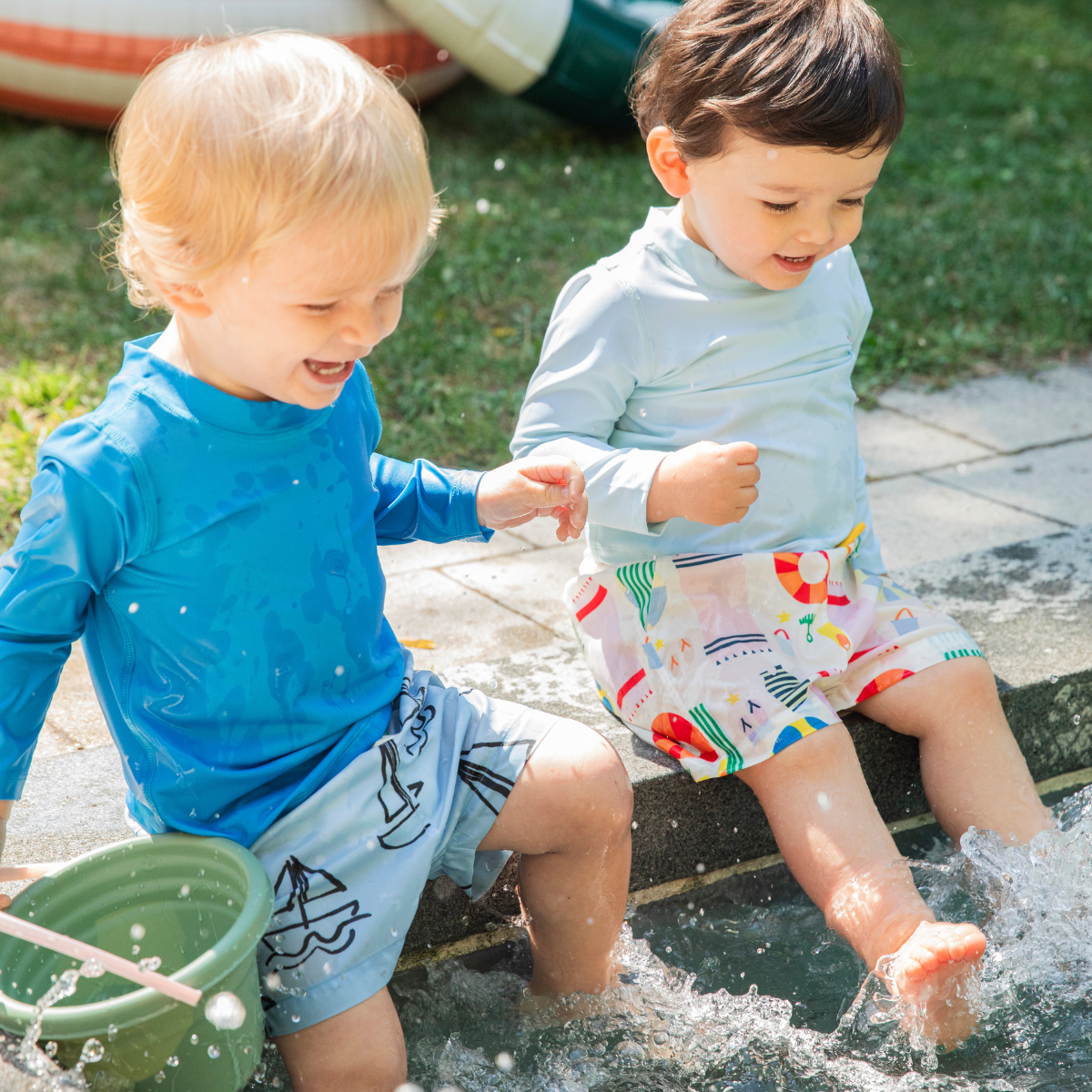It’s a key question that new parents often ask themselves, specifically when buying clothes for kids: when do children actually stop growing?
As the saying goes: ‘girls mature faster than boys’ – and there’s some truth to that. Prior to the age of 10, however, the rate of growth is pretty much the same between the two sexes.
This is what you need to know about how fast your child will grow if she’s a girl and a few extra things to keep in mind when shopping for clothes and gear.
The Short Answer

When you take your little one home from the hospital, you’ve got your hands full in more ways than one! Whether it’s a boy or girl, your child will grow rapidly for the first few years of development – typically at the exact same rate until the age of 10.
However, girls usually attain their full adult height by 14 - 15 years of age or within a couple of years after the start of their menstrual cycle. If her menstrual cycle begins early, she will experience that growth spurt earlier.
On average, puberty happens between the ages of 9 and 13, so girls tend to go through the major part of their growth between 10 - 14.
After getting their first period, they only grow an extra 1 - 2 inches or so in a couple of years, and that is basically where they've reached their full height.
Growth Factors

There’s a myriad of factors that influence a girl’s growth patterns, such as:
Heredity or genetics: A girl’s genes - the characteristics she inherited from her parents - play an important role in determining her growth patterns. This, of course, affects how tall the girl might grow up to be, her weight-gaining tendencies, and her metabolism rate. Genes are considered to be the most important determinant of a baby girl’s growth.
Environment: Upbringing and surroundings greatly affect a girl’s development, not only in physical terms, but psychologically as well. An environment constitutes all the geographical and nurturing conditions that affect the child. Socialization, habits, values – these all matter. A bad environment could result in a hindered or slowed growth, whereas a good one will make sure your child grows up to be healthy and happy.
The place where the girl is born also has quite a hand in determining their growth.
For example, if the child is kept at a place where pollution is abundant, this will, in turn, affect their health, causing their bodily growth to cease, because of the body being burdened by the diseases caused by the pollution; hence a clean environment is necessary.
Health and nutrition: The health and nutrition of an infant are extremely important, from the time they’re born to the time they reach adolescence. For example, if your child has a medical condition or has developed one due to environmental circumstances, this could be a major hurdle in her growth.

When confronted with an illness of any kind, your child must be treated by a reputable pediatrician so that the condition doesn’t slow their growth.
Food is vital to healthy and steady growth as well! Following the breastfeeding or formula stage, give your baby girl the best quality food you can provide.
Malnutrition can cause a child’s growth to slow or halt, limiting her true growth potential. Contrarily, over-nutrition can cause obesity and lead to another range of problems. The food that you’re giving your child should be adjusted to their age and keep in mind their digestive capabilities.
Hormones: In girls, the key active hormone is estrogen, which controls their biological and physiological growth till they reach full maturity. Furthermore, according to scientific research, girls stop growing two years after their menstrual cycle begins - roughly around 14-15 years of age. This is when their height and bodily structure growth halts.
Early Stages of Growth
A baby girl’s growth is divided into 4 stages:
Infancy (0-1 years old): At this age, the baby requires extraordinary care, attention, and protection, including proper clothing and careful dressing methods. If you live in colder climates or experience harsh winters, the baby needs to be wrapped (or swaddled) in a blanket to reduce the risk of pneumonia.
Toddler (2-4 years old): This is the age of rapid cognitive and mental learning. Your baby will begin to walk, potty train, and learn to put on her own clothes. Your little one will also be eating with her hands, playing outside, and growing into her personality – be sure to have some resilient, comfortable toddler clothes that can withstand many wash and dry cycles!
Sizing might be an issue at this stage, so keep a close eye on how clothes fit and make sure they are never restricted or uncomfortable. A child grows the fastest in these early years, so be sure to buy clothes that are slightly larger than their current size so that they aren’t immediately discarded.
School Age and Adolescence
School Age (5-12): In this age range, growth slows down, and your daughter will not need to upgrade clothes every few months like in the past. Thankfully, you can make those clothes last a bit longer than usual, as long as they’re made with strong and durable materials.
Teenager (13-Adult): Girls will begin to show preferences for clothes in this range, so help them make smart choices and be present when shopping around. It’s your duty to make sure she has proper clothes for school, extra activities like sports, and so on.
Shopping For Clothes For Your Growing Girl
Now that we’ve listed all the things that influence your child’s physical growth and the various stages leading up to adolescence, here are some challenges you might face when shopping and managing your girl’s wardrobe.
For starters, unpredictable growth is something that every parent has to contend with.
Since the child’s growth spurts can’t be predicted with much precision, you might find yourself at a loss when shopping for well-fitting clothes. It might even be a matter of weeks before a new shirt or pair of pants no longer fits!
This will not only rack up a big bill, but it can also lead to unwanted waste. The last thing you want to do is dispose of clothing shortly after you purchase it.
Fortunately, there’s a way to counter that. When the clothes become too small for your child to wear, donate them to Goodwill or any other charitable organization, and another child can benefit from your philanthropy. As they say - a good deed never goes to waste.
Also, track progress with measurement tools and try to anticipate sizing needs! Keep a size chart with you so that you always hit the mark and prevent any useless purchases. Shop consciously and be diligent about returns if needed.
Conclusion
Lastly, remember to purchase sustainable, quality clothes when you can. They’re good for your girl’s health, great for the earth, and you set a precedent for conscious consumption and appreciation at an early age. Gold star for you!
Sources:
When Do Girls Stop Growing? Median Height, Genetics & More | Healthline







Leave a comment
This site is protected by hCaptcha and the hCaptcha Privacy Policy and Terms of Service apply.